Amerzone: The Explorer’s Legacy (remake) review
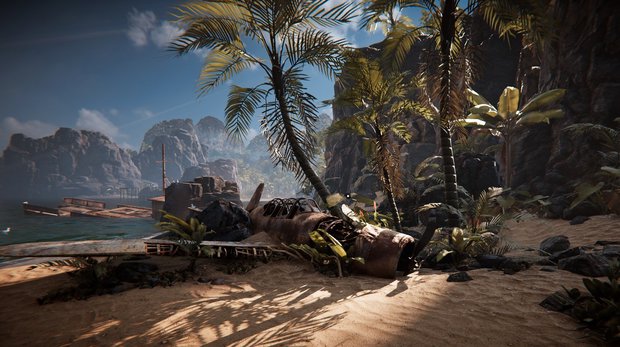
- 0 Comments
Benoît Sokal’s 1999 Myst-style adventure soars higher than ever in this gorgeously enhanced modern update
Nowadays, Benoît Sokal – sadly, deceased – is best remembered among adventure gamers for his work on the Syberia series. However, his first game collaboration with Microids in 1999, predating the original Syberia by three years, was the Myst-styled Amerzone: The Explorer’s Legacy. A globetrotting adventure into the heart of a fantasized rainforest, it exhibited many of the themes and stylings that would later fuel his more renowned series, but its prerendered visuals quickly became dated and the game was largely forgotten. Now, over twenty-five years later, Microids Studio Paris has remade Amerzone with shiny new graphics, an updated interface, and clearly a lot of love for the original, offering a much more enticing experience whether to new players or those already familiar with the original.
Following in the footsteps of many other games of its time, Amerzone casts players in the role of the silent first-person protagonist. Nameless but not completely generic, it’s soon established that the character is a white male trying to get his big break as a journalist in 1998 who thinks he may have found it in the person of Alexandre Valembois. An aged man nearing the end of his life, Valembois is burdened by a deep regret over his actions on an expedition to the Amerzone (a fictional stand-in for our own Amazon) in the 1930s. Back then he went in search of the fabled White Birds, an avian species that seemed to bring good fortune to the local native tribe. According to legend, once in a generation, the White Birds would lay a single egg that would contain the next generation of their species. Valembois, looking to make a name for himself, ruthlessly stole the egg and returned with it to the scientific community in Europe, only to be met with derision and scorn. Meanwhile, one of his traveling companions, Antonio Alvarez, chose to remain in the Amerzone and established an authoritarian regime that did its best to keep outsiders from ever entering again.
Valembois relates all of this history when you meet him in his European lighthouse. He has been working hard the past few years to build a hidden underground lair from which he plans to launch a new expedition to the rainforest and return the still-unhatched egg. However, just as he concludes his tale, the old man dies, his last great adventure unfulfilled. Of course, this is where you take up the challenge, as Valembois has left notes and clues throughout the lighthouse, spurring you to embark on the quest to return the egg personally.
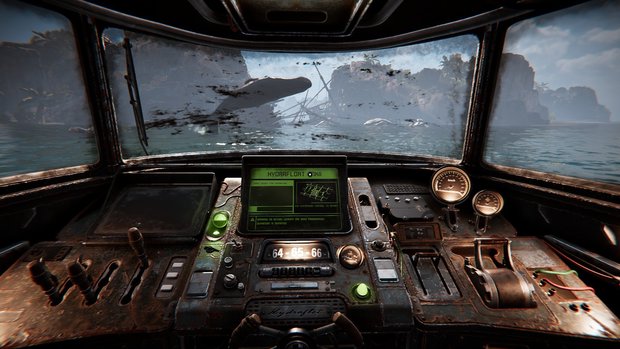
The game is divided into seven chapters, with the first taking place exclusively at the lighthouse. Having not played the original release, I thought this starting chapter would be the shortest – a quick introduction to the game world and mechanics, and then off to the Amerzone. Instead, it’s the longest and most challenging chapter in the game. Here, on the coast of Europe, Sokal indulged his interest in mechanical contraptions of all sorts: a slide projector, a globe of the earth with a secret, various elevators for moving about the place, and perhaps most importantly, the Hydrafloat hidden in the secret basement, an innovative travel vehicle that can be reconfigured through the use of 1990s computer diskettes.
With different unlockable upgrades, the Hydrafloat can become a plane, a boat, a submarine, and more. Of course, at the beginning of the game it’s not quite ready to go, so you will have to manipulate various mechanical puzzle machines to finish the preparations. From there it’s off to the Amerzone, where, except for another handful of mechanical combination puzzles, the challenge is surprisingly much easier, consisting mainly of finding items and using them in logical spots in the game world. Objectives include the perennial one of finding a jerry can at each stop to keep your vessel fueled, helping former acquaintances of Valembois so they’ll give you more diskettes for new Hydrafloat configurations, and moving various obstructions from your path like dams, herds of wild animals, or clouds of insects. Doing so might mean getting creative or venturing off the beaten path, whether swapping out the mold on a smelting furnace to make different metal objects, or even donning a diving helmet and suit for some underwater exploration. It’s a peculiar difficulty structure but not necessarily a bad one, as the relative ease later on allows players to immerse themselves in the fantastical world that awaits.
As one would expect of a game originally conceived by Benoît Sokal, Amerzone is beautifully designed and given a huge boost by the remake’s enhanced graphics. But it is a beauty subjected to the (in-game) decay of time. Locations have a scale and a majesty to them that hint at how truly grand they must have been in their heyday but have since fallen into decay and disrepair. Nowhere is this more apparent than the small village of Puebla, midway through the journey. Along the deserted main street, old buildings seem to sag against one another, their once-vivid paint now faded by the passage of time, with the surrounding jungle slowly encroaching. In a truly poignant moment, you can find a painting of what the village used to be like, which is held up in comparison while surveying the street. The artwork depicts a bustling town full of life and the soundtrack fills with the echoes of happy people, long since gone.
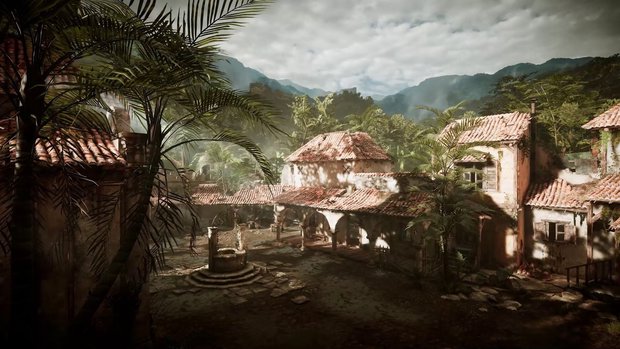
The rest of the adventure holds many other wondrous sights and sounds to behold. A stop at the aptly named Shipwreck Island leads to an underwater stroll in a diving suit to help a stranded sperm whale and to discover the remains of Valembois’s original Hydrafloat from the 30s. Then there’s a harrowing trip along the Amerzonian river, evading Alvarez’s military while observing strange creatures that become more fantastical the farther along you progress. You’ll make an unscheduled stop at another native village with an impressive array of gadgetry based on pulleys and winches to help climb a grand waterfall. And finally, you’ll venture through mosquito-infested swamps to the great volcano that waits at the heart of the jungle, the only place where the egg can be successfully hatched.
Each location is dense with even more detail than the original release displayed, but a handy keyboard-toggled hotspot highlighter helps bring order to chaos by showing where all interactive items can be found. Like the original, movement here remains strictly node-based and point-and-click, with no option to freely walk about the environment, the viewpoint instead sliding smoothly through the world when traversing from one node to another. While this gives an immersive view of your surroundings, it can slow things up in comparison to older node-based games that would instantly teleport you from one node to the next. Most of the major locations have fast-travel maps that can be found with a bit of searching. Even so, I’d guess over half of my nearly thirteen hours spent playing Amerzone was spent simply watching movement animations. According to one of the game’s help tips, scene transitions can be skipped by double-clicking, but I found that system to be very glitchy and can count on one hand the number of times I tried that it actually worked.
When in any given node, the camera can be panned with the mouse to freely turn around and look up and down. Various on-screen indicators will appear when close enough to the center of the screen to allow movement, or when an interactive hotspot appears. Sometimes left-clicking these leads to close-up views of items or areas. From here, the middle mouse button can be pressed to back out to the broader previous view. The right button is reserved for accessing a radial wheel from which things like the in-game journal and game settings can be accessed.
The journal contains pages from Valembois’s travelogue of his original journey through the rainforest. Besides providing a few clues, these are beautifully illustrated with some great Sokal designs of the flora and fauna to be encountered along the way. The journal also includes a list of tasks currently in need of being fulfilled and hints for doing so, a grid displaying images of the inventory items being carried, documents collected along the way, and an assortment of news stories. Collecting information serves as a bonus side investigation that is completely optional, but searching out all the clues really fills in the backstory of the events that have transpired in the Amerzone.
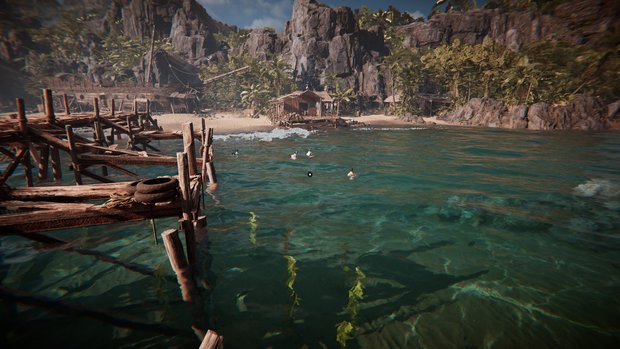
The game’s audio really complements its sparkling new visuals. Music is kept to a few brief adventurous but melancholy instrumental stings, or a lone female voice intoning a brief tune for key moments. Similarly, voice acting is fairly sparse, limited to a handful of characters that are only briefly met throughout the journey. They’re all voiced well, although it does seem a bit odd to hear American accents in the heart of a rainforest. Where the sound design really shines – auditorily speaking of course, is with its ambient soundtrack. The Amerzone is full of life: vocalizations continually abound for bugs, crocodiles, rodents, birds, and larger mammals alike, including the legendary ones. Wind, the crash of ocean surf, and the rumble of a volcano are juxtaposed against the creaking and clanking of ancient equipment left to fall to ruin. Coupled with the stunning sights that await at every turn, it is a powerful mixture.
Less powerful is the game’s save system. Sadly, Amerzone makes use of only a single autosave throughout the game. I’d call it archaic, but games used to have manual save systems figured out decades ago. It’s only in modern times that this single checkpoint system has emerged. Here a symbol is displayed to inform you when your progress is being recorded, but in practice I only ever saw the save symbol three times. When going to quit a game session, at least the game shows how long it’s been since the last save, and I saw it be as long as twelve minutes. I’m still unsure what triggers an autosave. It doesn’t seem to be moving about the environment nor completing steps on the critical path, as I’d frequently come back and find I’d have to repeat one or two actions I’d done before.
There is no fear of dying so there’s no need to save regularly, but the length of the game ensures you’ll have to stop at various times throughout and no one likes repeating previous steps. Given that Amerzone in many ways portrays itself like a book – explicitly calling its different sections “chapters” – it’s odd that the developers would not provide a freely placeable bookmark option to pick up exactly where you left off. And there’s always the fear of a single save file being corrupted. My heart was in my throat at one point when the game froze two-thirds of the way through while loading the start of a new chapter. I’ve had similar moments in other contemporary games that have left the autosave completely unusable. Fortunately that wasn’t the case here, but it was still gut-wrenching.
Apart from the mishandled save system, the rest of the experience is fairly clean. I did encounter a few bugs, though nothing game-breaking (except the one game freeze, which did not occur a second time). Sometimes when using a fast-travel map, the radial menu would pop up after every node movement until some random combination of button clicks would manage to suppress it again. In other instances, after picking something up from the environment, the hotspot for that item would not disappear, allowing it to be picked up again. They’re minor things, but they do break the immersion the game so skillfully evokes otherwise.
Not to be outdone by the gorgeous aesthetic is the world-building throughout the adventure that I absolutely loved. This is a deep environment with a rich backstory, set in the same fictional world as the Syberia series. Valembois’s lighthouse, for example, has a wind-up piece of tech that sports the mechanical automaton logo of the Voralsberg factory. Though I didn’t get it my first time through, a Steam achievement suggests that it’s even possible to call Kate Walker’s law office. This game’s history gets into the lore of the native tribe living in the heart of the Amerzone, including a near-mystical belief in a mother goddess figure, the mixing of herbs and flowers for a variety of useful purposes, and of course the White Birds themselves and the good fortune they’re meant to bring. All of this culminates in the finale itself. Without spoiling anything, let’s say that the ending is open to a multitude of interpretations, which, in the days since finishing, I’ve kept mulling over in my head. Some will likely be less enamoured with a lack of clear resolution, but it’s handled well here and I love that I can inject my own thoughts onto what it all means.
Final Verdict
Though it may look and play more like a Myst game, Amerzone: The Explorer’s Legacy feels like a lost installment in the Syberia storyverse, while fully being an experience of its own. While staying true to both the source material and its original control scheme, it has been lovingly updated in this refined, modern take. Amazing environments and wildlife await, and mechanical contraptions abound for tinkering with. A whole mythology is woven into every building, every parchment you encounter. Syberia is one of the few games that to me felt like a real work of art and Amerzone elicits that same feeling as well. A few minor glitches and a poor save system can’t detract from this cozy but melancholy-in-the-best-way experience. Whether you missed it the first time around or wish to revisit it looking better than ever, the Amerzone is a place well worth exploring.
Hot take
The updated Amerzone: The Explorer’s Legacy is a beautiful experience through a fantasized rainforest on a quest to save a dying race of birds that will leave you thinking about it long after the credits have rolled.
Pros
- Fantastically realized environments
- Engrossing backstory
- Lots of extras to discover and do
Cons
- Option to bypass movement transitions is consistently glitchy
- Lack of a proper save system
Richard played Amerzone: The Explorer’s Legacy on PC using a review code provided by the game's publisher.



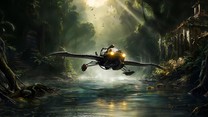
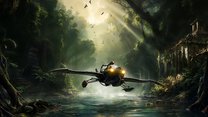





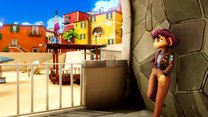
0 Comments
Want to join the discussion? Leave a comment as guest, sign in or register.
Leave a comment